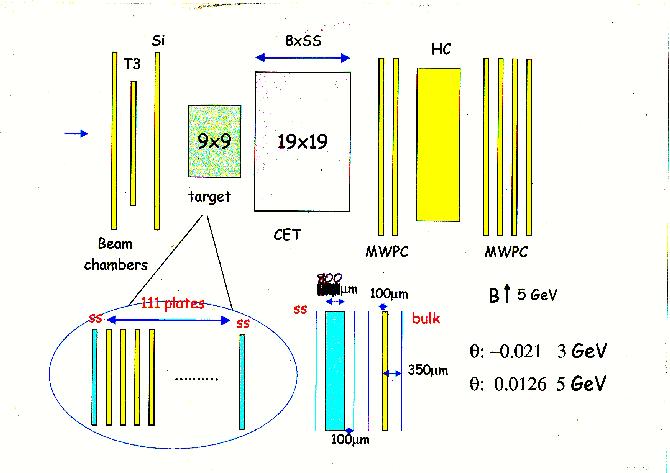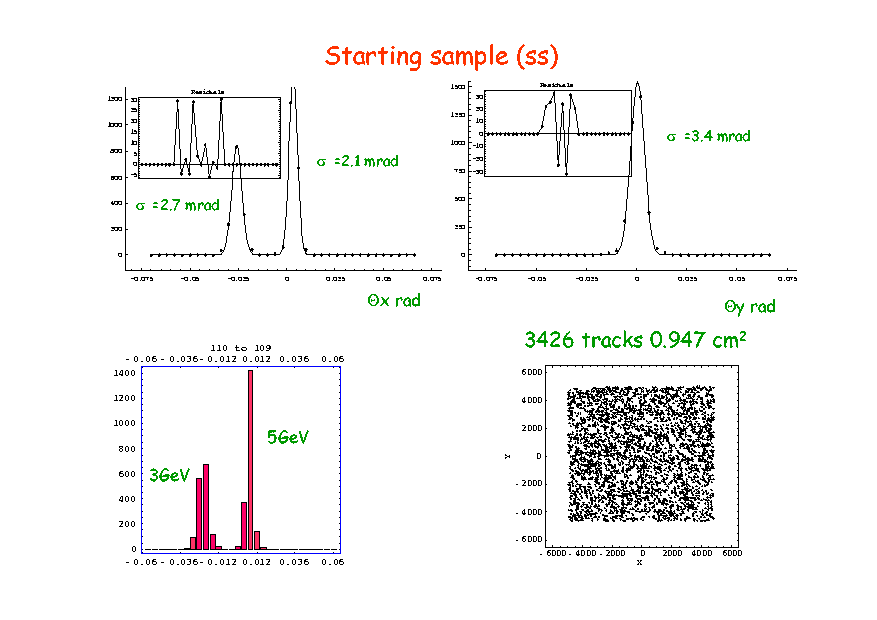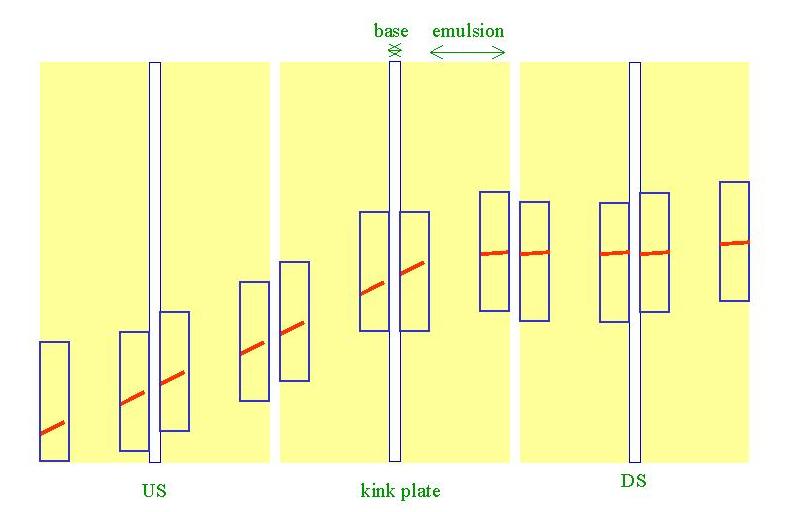
A stack of NIKFI-ET7C emulsion is irradiated to 3 and 5 GeV/c negative pion beam across the 5x5 cm2 usable area. The emulsion plates were kept vertical to the beam. Approximately 104 pions recorded with equal sharing for the two sample. The setup is placed to the 30 cm entrance of a dipole magnet with 0.7 T field which is oriented vertically. The field direction set upwards for 5 GeV and downwards for the other. It allows the momentum measurement and a clear separation of the two sample.
The test set-up is shown below. For this analysis, only information from emulsion target and from Compact Emulsion Tracker (CET) are used. Target consists of special sheets (SS) and target emulsion plates (bulk). SS has two thin emulsion sheets (100 mm) coupled to each side of a 800 mm thick plastic base which is used for precise angle measurement. Bulk has the base thickness of 100 mm with 350 mm emulsion thickness. CET consists of 8 SS like emulsion plates. Two sets of CET are used for two pion beams.

Extraction of data is done with automatic scanning microscopes developed at CERN. An area of 1 cm2 are scanned in all target plates and in two SS. The plates are inter calibrated using the tracks in this area with an average precision of 3 mm in each transverse directions. The area scanned and angle distributions of the two sample is shown below. The two sample is clearly separable in angle space.

All tracks are followed down and vertex positions are predicted if a track is not found in two consecutive plates. Predicted positions and two more plates ( upstream and downstream ) are rescanned with a slightly different approach. Instead of scanning only 50 mm thick emulsion on downstream (DS) face of the plate, scanning is done for four surface with the same scanning thickness (see figure below). It allows distortion free angle measurement over the base and detection of a possible kink automatically which reduces the amount of manual scan. A kink is defined as either an angle change larger than 30 mrad in the track or disappearance of the track in vertex plate. Daughter tracks with large angles will be out of scanning acceptance and track will not be found. Similar topology occurs if there is an inelastic interaction instead of an elastic one with kink. In many cases tracks emerging from the interaction vertex will not be detected due to scanning angle acceptance and no visible track will be seen by the microscope in emulsion after the interaction point.

Manual scanning is performed to determine the type of interaction for those tagged as interaction in the previous procedure. Events are separated into three categories as inelastic interaction with nuclear fragments and MIP tracks, elastic with very little activity on the vertex like b-decay ( black kink ) and elastic with no visible activity at the vertex ( white kink ). All the daughter tracks of white and black kinks are tracked downstream to CET for the momentum measurement.
19 kink events are detected in the scanned area over 110 target plates. CETs are calibrated and momentum resolution are determined to be Dp/p ~15 % for both sample. Effort is spent for more precise momentum measurement at present. Results will be released soon when this measurement and the analysis are finished.
(Updated
on 11 August 2000 , ErhanPesen)